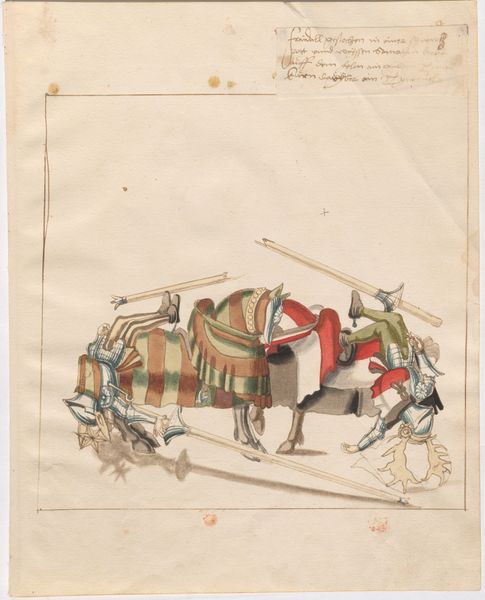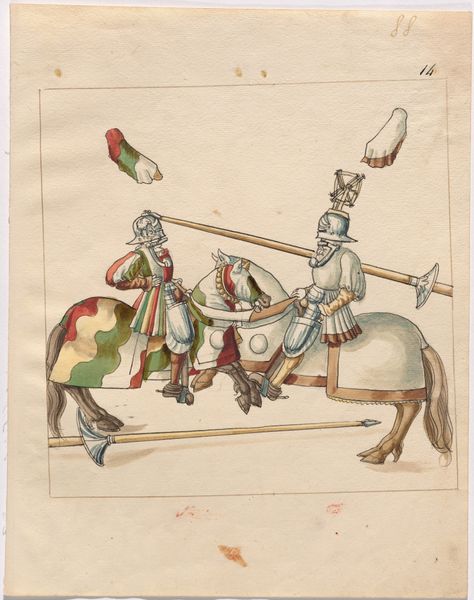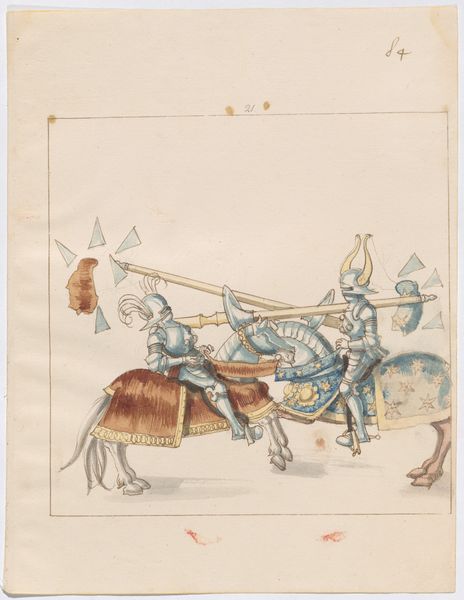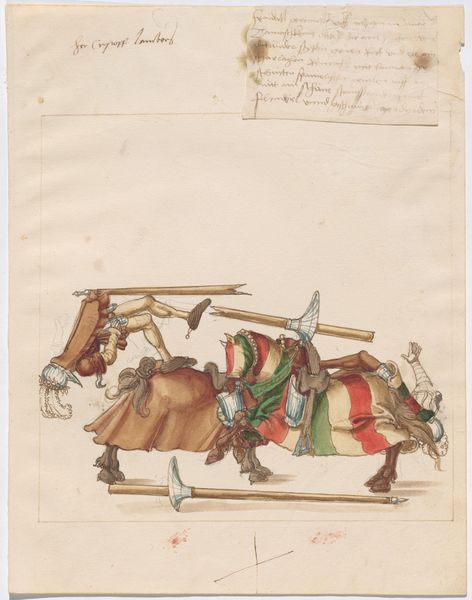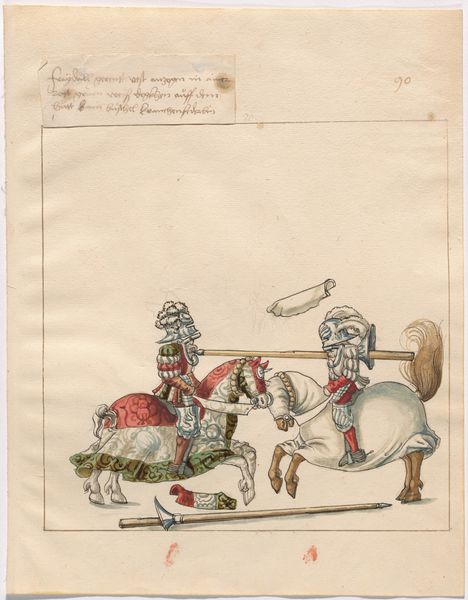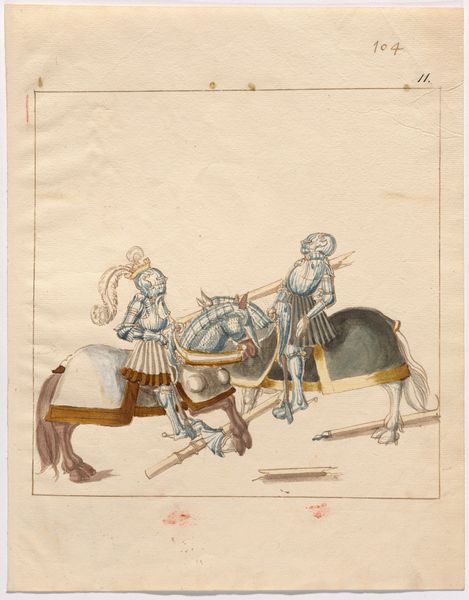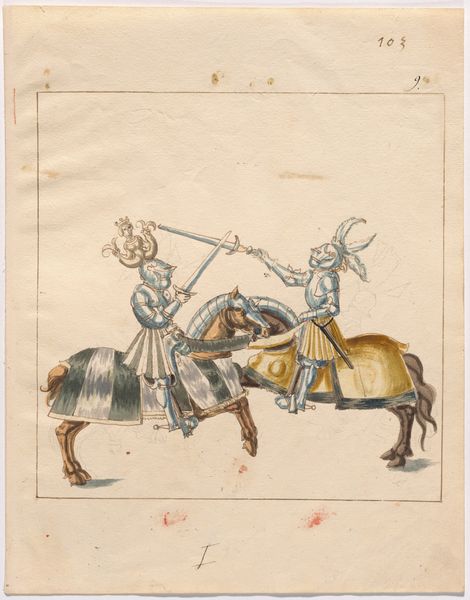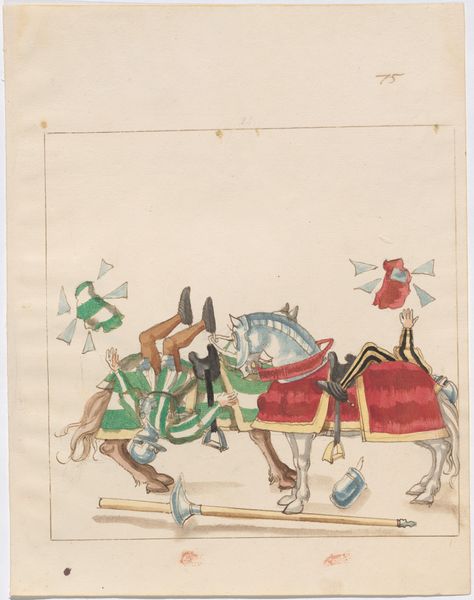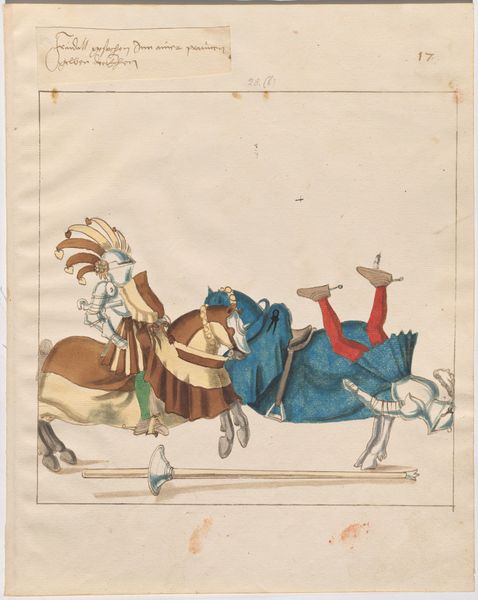
Mock Joust of War with Flying Shields and Without Bevors c. 1512 - 1515
0:00
0:00
drawing, watercolor
#
drawing
#
medieval
#
figuration
#
watercolor
#
coloured pencil
Dimensions: sheet: 32.9 × 26.3 cm (12 15/16 × 10 3/8 in.)
Copyright: National Gallery of Art: CC0 1.0
Curator: Here we have a drawing titled “Mock Joust of War with Flying Shields and Without Bevors,” dating back to about 1512-1515, attributed to an anonymous artist. The artwork employs watercolor as its medium. What strikes you first? Editor: It feels remarkably playful, almost cartoonish, despite depicting what is essentially a battle. The pastel hues and the checkered patterns soften the impact of what could be a very violent scene. Curator: Absolutely, the lack of defined perspective and the stylized figures contribute to that lighter tone. Consider how the armor, meticulously rendered in watercolor, points to specific craftsmanship, while also adhering to broader sumptuary laws about who could commission such display. What does this artwork tell us about the artist’s workshop and access to these materials? Editor: It highlights how the processes involved in arms manufacture—for combat, yes, but also spectacle—became artistic practice in itself. This "mock joust," while staged, speaks to how warfare served a crucial political purpose. Tournaments often were platforms for consolidating alliances. The display of arms, heraldry—everything served a purpose beyond the mere game. Curator: Indeed. We are observing both production of war materials, as well as, the staging of its culture. And how does its presentation through art in turn serve to create and further cement particular cultural and class dynamics of the period? Editor: It suggests a sophisticated patronage system. Somebody commissioned this, saw value in preserving this moment in artistic form. So, we're not just examining artistic and material processes, we are seeing the political agency in imagery from this era, and the selective ways it perpetuates and consolidates a historical narrative around warfare and honor. Curator: Exactly. On closer examination, even something seemingly frivolous tells a deeper story about social and economic frameworks. It challenges us to consider how our present-day consumption shapes narratives too. Editor: Yes. It becomes clear that art then, much like now, serves the multifaceted purpose of material record, political statement, and social document.
Comments
No comments
Be the first to comment and join the conversation on the ultimate creative platform.

